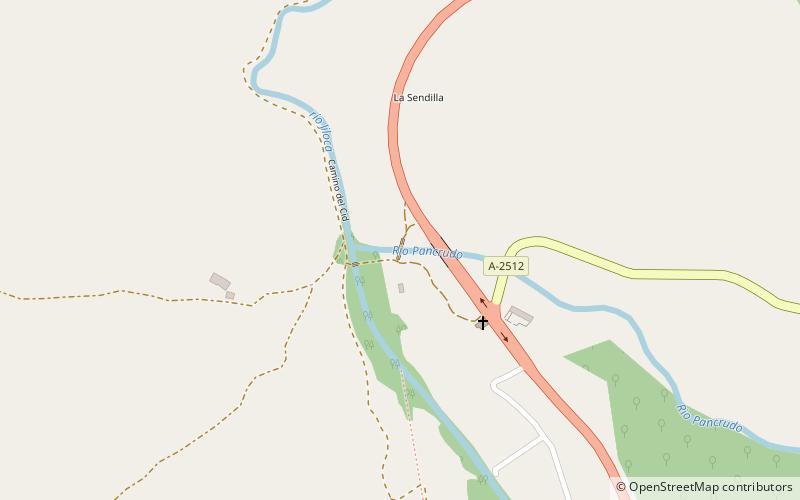Puento romano de Luco de Jiloca


Facts and practical information
The Roman bridge of Luco de Jiloca in the municipality of Calamocha, is located over the course of the river Pancrudo, near its mouth in the river Jiloca.
Built in ashlar masonry and masonry, its masonry is made up of three semicircular arches, the central one being the largest. Between the lateral eyes and the central one there are two other arches with their base higher than the riverbed, as spillways so that in the big floods the construction would not suffer so much the push of the waters.
It is the prototype of the so-called donkey's back bridges, 35 m. long, 3'40 m. wide and 5'30 m. high at the most. It has three openings with segmental arches, of which the central one is the largest, and is built with ashlar and masonry. Between the arches there are two cutwaters or lightening arches of 2 m. over which there are small vaulted spillways. The central arch is 12.20 m. long; the lightening arch is 1.60 m. long and the last arch is 4.50 m. long. The cutwaters are triangular and the piers do not have spurs. The deck is pointed.
Its ashlars are well laid, especially in the archivolts of the vaults and in the jambs of the arches. The union between the ashlars, perfectly carved, is made with mortar. It has been recently restored. This bridge was part of the Roman road that linked César Augusta and Cástulo. Its situation in this territory of the Caesaraugustan convent, makes it a point of irradiation and transmission of Roman roads for all its adjacent areas. It has traditionally been dated between the Republican period and the 1st century A.D. However, it may be of a much later chronology.
Aragon
Puento romano de Luco de Jiloca – popular in the area (distance from the attraction)
Nearby attractions include: Calamocha, Burbáguena.


